In my first attempt at using Cloud to deploy an app...
The problem: GCP (Google Cloud Platform) unexpected instance hour usage (Frontend Instance Hours). High traffic was not the issue but for some reason a bunch of "instances" and "versions" were created by their autoscaling feature.
Solution they suggested: Disable autoscaling and stop serving previously deployed versions of your instance. I still need one version/instance running but through their console I still have not found where it shows how many versions/instances I have running or where to stop them (also verifying that at least 1 instance is still working in order to not break my app)
My app is simple app that was developed by Google developers and recommended by them for dynamic rendering a JS SPA (allows search engines and crawlers to see fully rendered html).
My actual website together with a node app to point to GCP for
crawlers is hosted else where (on Godaddy)
and both are working together nicely.
The app I deployed to GCP is called Rendertron (https://github.com/GoogleChrome/rendertron)
Google also recommends deploying to GCP (most documentation covers that form of deployment). I attempted deploying to my Godaddy shared hosting and it was not straight forward and easy to make work so I simply attempted creating a GCP project and tried deploying there. All worked great!
After deploying the app to GCP that has almost no traffic yet, I expected zero costs or at most something under a dollar.
Unfortunately, I received a bill for more than $150 for the month with approx the same projected for the next month.
Without paying an addition $150 for tech support, I was able to contact GCP billing over the phone and they are great in that they are willing to reimburse the charges but only after I resolve the problem myself.
They are generous with throwing a group of document links at you (common causes of unexpected instance hour usage) but can't help further than that.
After many google searches, reading through documentation, paying for and watching gcloud tutorials through pluralsight.com, the direction I have understood or not understood so far is as follows:
- almost all documentation, videos and tutorials talk about managing or turning off autoscaling using Compute Engine Instance Groups
- It is not clear that instance groups is not another hole I will fall into that is a paid service and I will be charged more than necessary
- Instance groups seems like overkill for a simple app that wants only one instance running at minimal cost
- there is not enough or difficult to find documentation for how to run a very small scale app at minimal cost using minimal resources
- I have not read or watched anything yet of how to simply use the config .yaml file (initially deployed) to make sure the app does not autoscale and also if I find that it seems like I still need to delete versions or instances that have already been started and it is not clear in how to do that as well.
- Instances and Versions are not clear on google console of how many are running, I still have not found on google console where there are multiple instances/versions running.
I can use a direction to continue my attempt of investigating how to resolve the issue.
The direction of me needing to create a Group Instance (so I can manage the no autoscaling from there) is the way to go and where I should focus my attempts?
The direction of continuing learning how to simply update my config in the .yaml file to create no scaling, for example something like setting both min_instances and max_instances to 1 together with learning how to manually stop (directly from GCP console) more than 1 instance/version that are currently running is where I should focus on?
A third option?
As a side note, autoscaling with GCP does not seem very intelligent.
Why would my app that has almost no traffic run into an issue that multiple instances were created?
Any insight will be greatly appreciated.
**** Update **** platform info
My app is deployed to Google App Engine (GAE) (deployed code, not a container)
Steps taken for Deploy:
git clone https://github.com/GoogleChrome/rendertron.git
cd rendertron
npm install && npm run build
gcloud app deploy app.yaml --project MY_PROJECT_ID
I simply followed the steps above and my app has been working great, and have not touched a thing since deployment.
The config (app.yaml) originaly deployed was:
(which I made no changes to from the Rendertron repo)
runtime: nodejs12
instance_class: F4_1G
automatic_scaling:
min_instances: 1
env_variables:
DISABLE_LEGACY_METADATA_SERVER_ENDPOINTS: "true"
-- Google Cloud Console Info
under App Engine --> Versions
There is 1 item listed with the following values:
Instances: 1
Runtime: nodejs12
Environment: Standard
Size: 392.7 MB
Deployed: Feb 23, 2021
Config:
runtime: nodejs12
env: standard
instance_class: F4_1G
handlers:
url: .*
script: auto
env_variables:
DISABLE_LEGACY_METADATA_SERVER_ENDPOINTS: 'true'
automatic_scaling:
min_idle_instances: automatic
max_idle_instances: automatic
min_pending_latency: automatic
max_pending_latency: automatic
min_instances: 1
network: {}
**** Solution ****
I uploaded a new app.yaml file and changed:
min_instances: 1 to max_instances: 1
(had to redeploy the entire project with an updated app.yaml)
At first I also changed "instance_class" from F4_1G to F1 to save money, but I was getting an error in my app that there was not enough memory and my app crashed with a 500 server error. (The rendertron app came up but crashed when trying to render something) I updated it again back to F4_1G and the app seems to work properly.
If I see charges again in the future when my traffic goes up, I will check if there is an instance class between F1 to F4_1G that could be enough memory for my app to work but accumulate the minimum charges possible.
Below you could see that when I made the change on Friday and until the following Sunday the costs dropped to 0 but the app is still running properly:
Screenshot showing GCP billing report costs dropped after change
**** Solution ****



